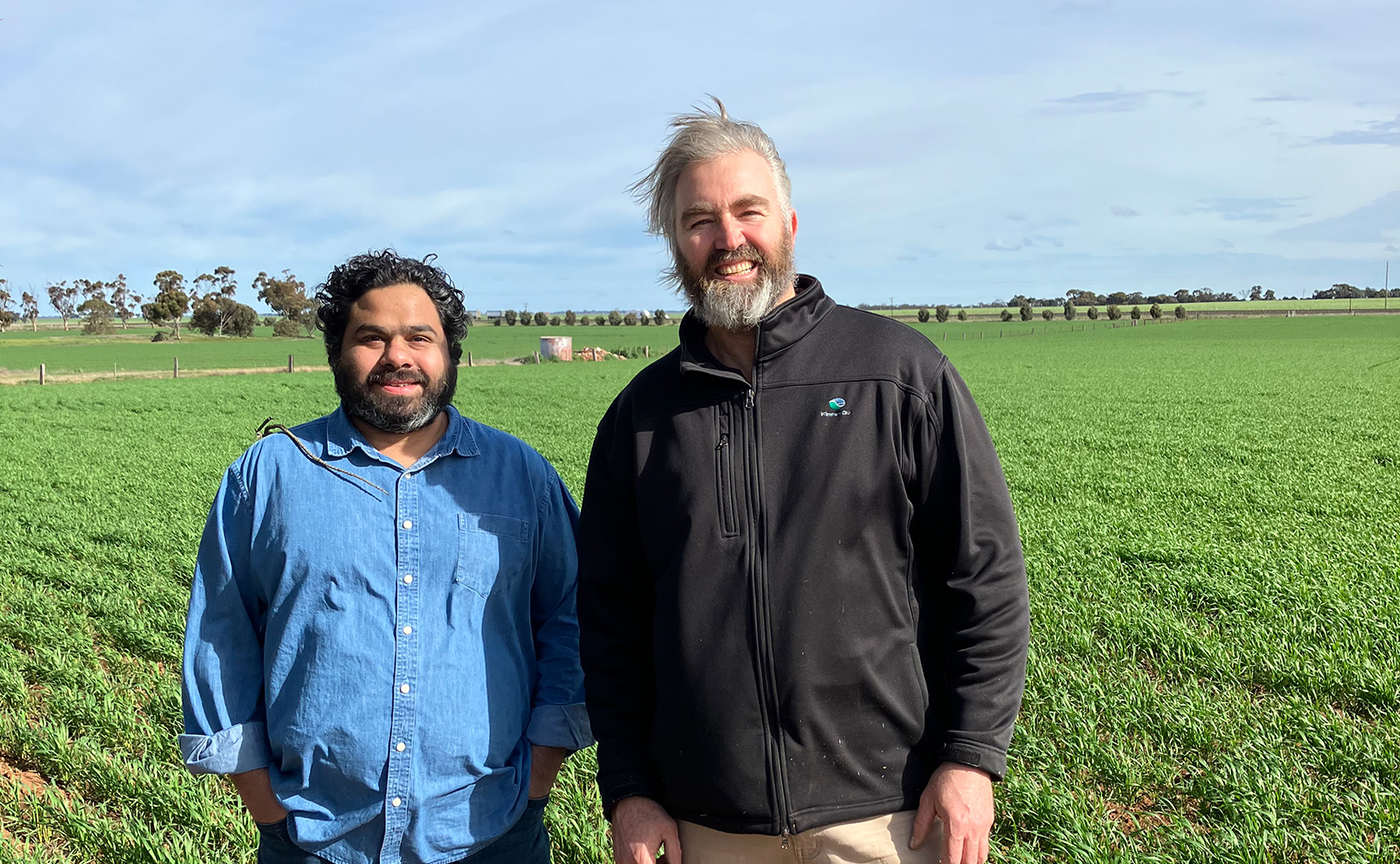Wimmera CMA CEO Dave Brennan (R) with PhD student Mohammad Rahman (L)
Established 25 years ago in the Wimmera region in western Victoria, the Wimmera Catchment Management Authority (CMA) is a small and agile organisation working to deliver improvements to the health of the catchment.
It has a strategic role in looking after both conservation and production. Dave Brennan is the CEO and he works with a range of stakeholders and partners to deliver on ground change.
“We are delivering projects aimed at improving farming practice, water management, biodiversity and building community,” Dave says.
Located in the Wimmera region, which covers 10 per cent of Victoria, its territory stretches from the South Australian border in the west to just beyond Stawell in the east.
Eighty per cent of the region is used for agriculture. It is mostly dryland and mixed enterprise farming. The crops they grow include wheat, barley, canola and legumes, with sheep dominating the grazing.
The biggest issues facing landholders in the area is farming in a low to medium rainfall zone.
“The millennial drought is etched in everyone’s minds. Despite recent rainfall, drought is at the forefront for many Wimmera farmers,” Dave says.
Farmers in the region are working with varied soils and landscapes. They range from red duplex soils and heavier self-mulching clays to lighter sandy soils. The landscape varies from near desert in the north-west to hill country at the edge of the Great Dividing Range.
The Wimmera CMA is one of the 39 Soil CRC participants. Working with the Soil CRC is about recognising the needs of most landholders in the Wimmera.
“Farmers need to be both sustainable and profitable. They need to be able to deliver good stewardship and environmental outcomes. The Wimmera CMA has a long history of bringing together research institutions and farmers. Because we work with local farmers, we are very focused on ensuring uptake of good research,”
says Dave.
The Wimmera CMA is involved in a couple of Soil CRC research projects. They have been working with Dr Hanabeth Luke from Southern Cross University to conduct landholder surveys for the What drives farmer decisions? project.
Landholder surveys are invaluable as they put facts, data and farmer driven insights into project design and service offerings of Wimmera CMA.
“They will provide the information that will enable us to tailor products to solve the problems that landholders actually need solved. The survey forms part of a longitudinal farmer survey across different farming regions.”
The Wimmera CMA is also involved in the Visualising Australasia’s soils project led by Professor Peter Dahlhaus from Federation University, which is aimed at utilising soil data. Dave Brennan sees this involvement as an opportunity to sharpen monitoring and assessment of soil which will result in better productivity for farmers.
“Making data-based decisions makes sense. It means we can solve the problems in front of us, not just what we think might be there. It is the difference between intuition and facts,” Dave says.
The CMA is also supporting Soil CRC PhD student Mohammad Arifur Rahman (Arif). He brings a unique expertise to the Wimmera CMA. Previously most of the staff studying PhDs were in the traditional natural resource management field.
“Arif is a software engineer and is using his IT expertise to solve a natural resource management problem,” Dave explains.
His project is using artificial intelligence to analyse soil health. The focus is on soil carbon and the difficulties in effectively and cheaply understanding how much carbon soil can sequester and retain.
“We have introduced Arif to Wimmera farmers as well as key partners in Agriculture Victoria. There is an amazing amount of goodwill for this PhD project.
I am looking forward to the Soil CRC Conference so we can continue to collaborate with other participants to identify complementary work for Arif’s PhD project, as well as filling in any knowledge gaps.”

